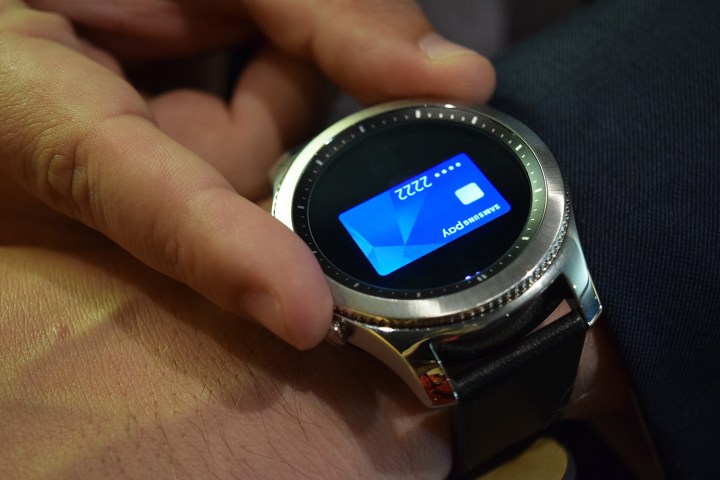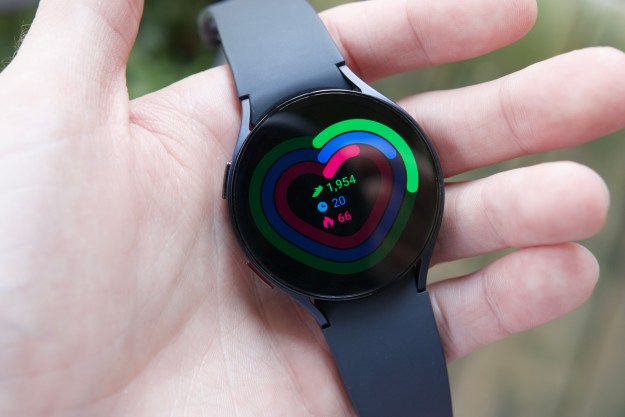
The screen occupies space along the bezel that is typically used as a rotating dial on Gear smartwatches for quickly changing apps and other functions. In the application, the strip relays basic information, like date, time, and weather. It runs most of the way around the watch, with a space in the middle omitted to house the driver circuit board.
The patent notes that, in this particular application, the display can only be rotated 90 degrees. It is also split into two sections — upper and lower — for an undisclosed purpose, though the diagrams often show them acting together as one panel.
As space comes at a premium when designing a device so compact and complex, it is understandable that Samsung would look to smartwatches as the next class of devices that could benefit from the recent advances made in flexible display technology.
The application itself was filed in September 2015 and published last week. While patents are no guarantee of the future, it wouldn’t be surprising to see Samsung bring this idea to term in the next Gear iteration. It could help the device stand out in a crowded market.
Patently Mobile goes on to note that the secondary display could also serve as a test bed for another, future idea Samsung is considering — a bracelet with a screen that almost fully wraps around the user’s wrist. Once proven, the tech employed here might function at a much larger scale in the unique form factor of a bracelet. Apple has also shown interest in such a design, which indicates a possible direction forward for the smartwatch industry. The question is, how long until that vision can be realized?
Editors' Recommendations
- Samsung Galaxy Watch 7 Ultra: news, rumored price, release date, and more
- Samsung Galaxy Watch 7: news, rumored price, release date, and more
- Samsung may be working on an incredible new smartwatch design
- These are the 5 smartwatches you should look forward to in 2024
- This old Samsung smartwatch still tugs at my heartstrings



